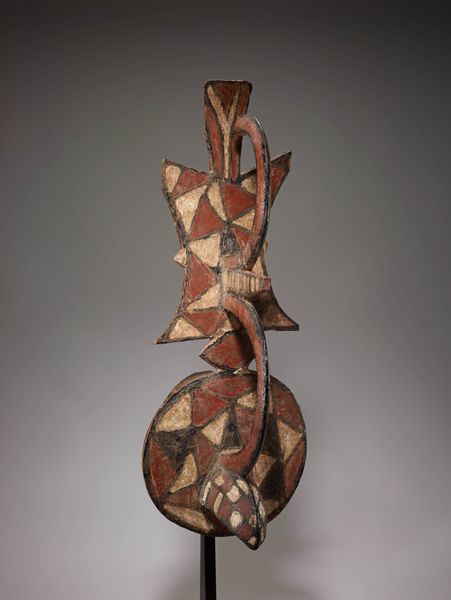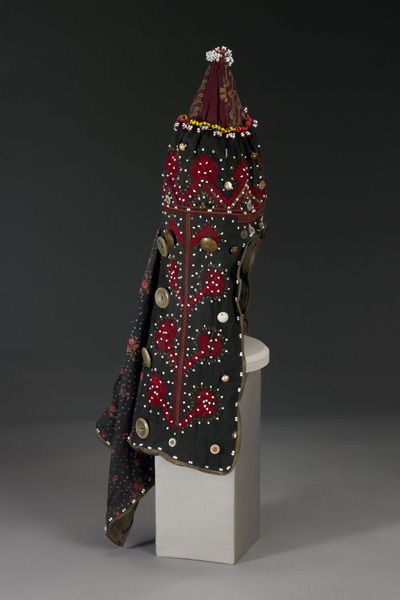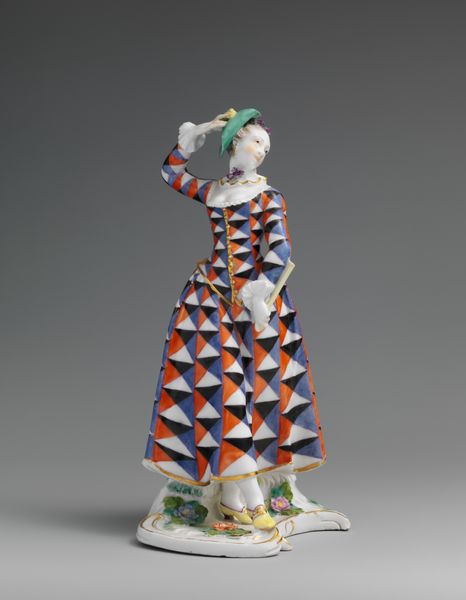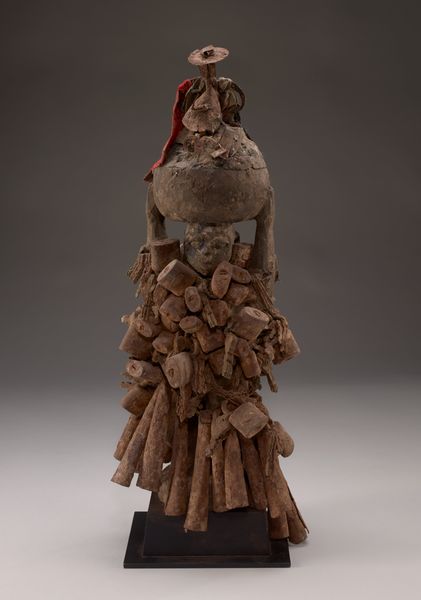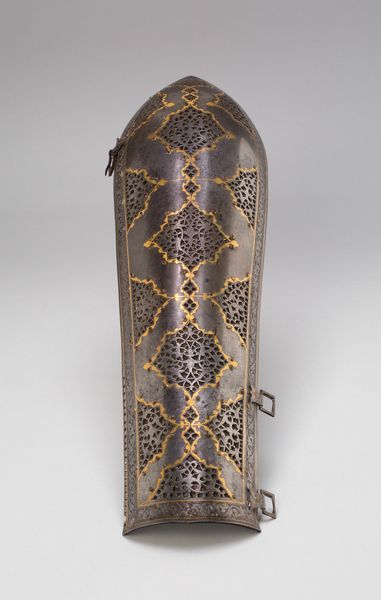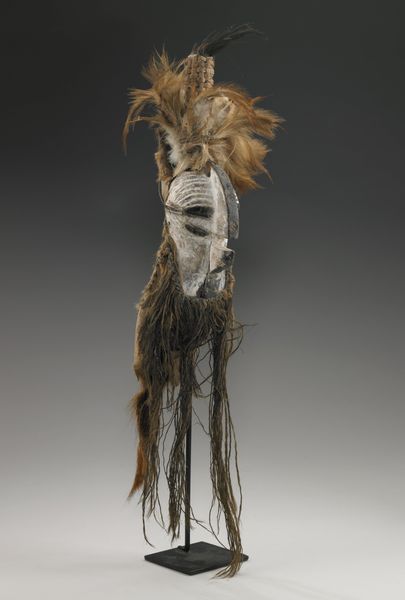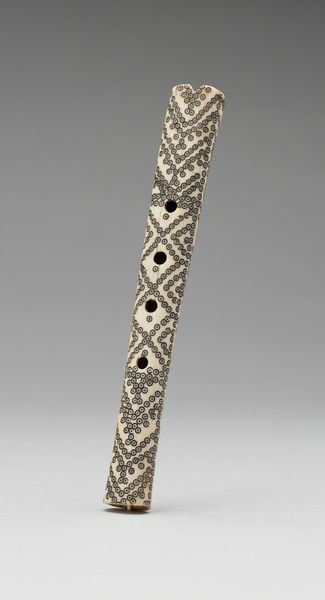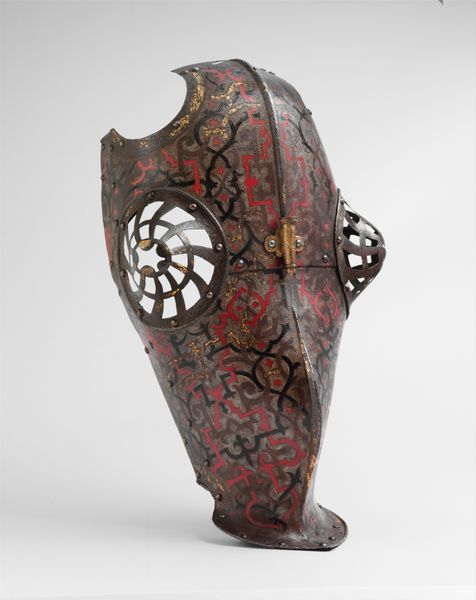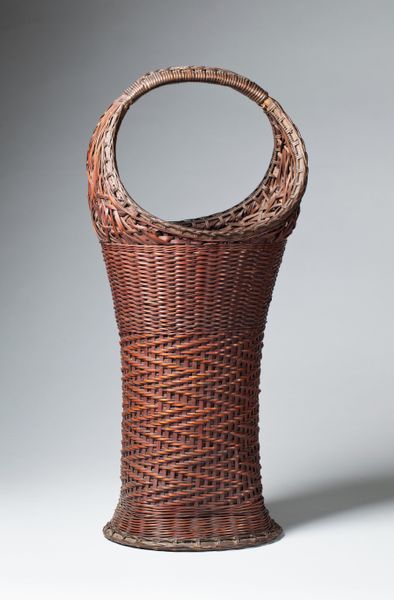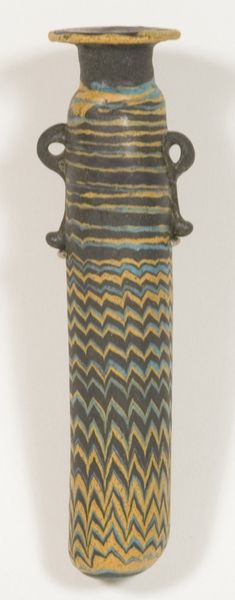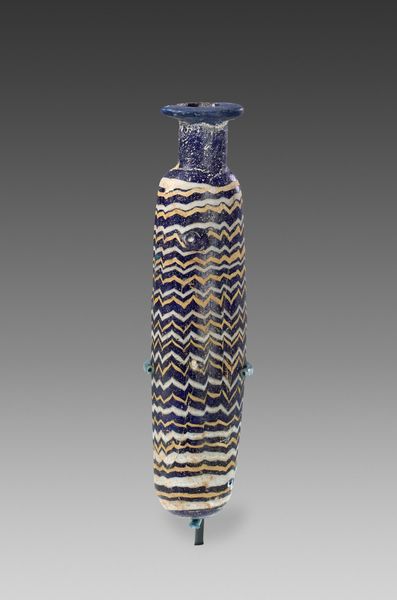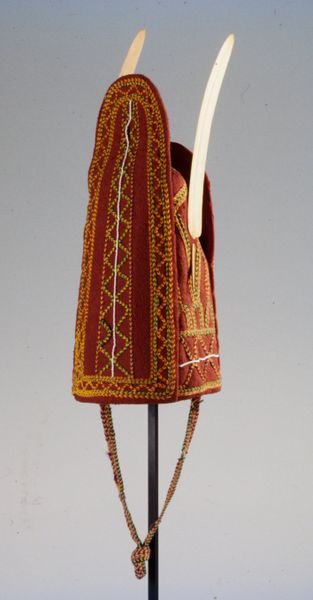
fibre-art, sculpture, wood
#
african-art
#
fibre-art
#
sculpture
#
sculpture
#
wood
Dimensions: 20 x 10 3/8 x 2 in. (50.8 x 26.35 x 5.08 cm)
Copyright: Public Domain
Editor: This is “Whistle,” a sculpture from the 1940s by an unknown artist, made from wood and fibre, at Mia. It feels almost ceremonial to me, like it was crafted for a ritual. What do you see in this piece? Curator: I’m drawn to the materials and the labor involved in its creation. The wood and fiber suggest a deep connection to the environment. The process of shaping these materials, potentially through techniques passed down through generations, highlights the role of making art. Editor: That’s fascinating. I was so focused on its visual form that I missed thinking about the actual creation process. The repeated patterns imply extensive labour. Curator: Exactly! Consider the societal role such objects played. Were they commodities? Were they meant for practical use, or something more symbolic? The fact that it's called "Whistle" gives us a starting point, but also raises more questions about its function within the community and if it's literal use affected it's symbolic power. Editor: It makes me think about craft versus art. Are we assigning it a Western idea of ‘art’ that wasn't originally intended? Does this affect how we look at objects from other places? Curator: Precisely. The distinction often rests on the social context, how it was produced and distributed. The value is in the hand of the artist. Does the artist create alone? Or with a larger collaborative production effort? Editor: I never considered approaching art this way! Thank you, it completely changed my perspective. Curator: Indeed, looking closely at material choices and the means of production helps us unpack power dynamics and broader cultural meanings embedded within the art.
Comments
No comments
Be the first to comment and join the conversation on the ultimate creative platform.
